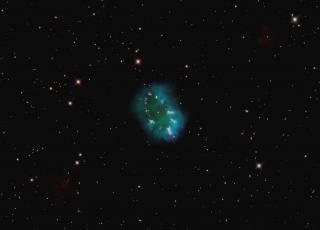Bibcode
Köppen, Joachim; Day-Jones, Avril C.; Napiwotzki, Ralf; Corradi, R. L. M.; Jones, David; Rauch, Thomas; Miszalski, Brent; Boffin, Henri M. J.
Bibliographical reference
Science, Volume 338, Issue 6108, pp. 773- (2012).
Advertised on:
11
2012
Journal
Citations
108
Refereed citations
81
Description
Stars are generally spherical, yet their gaseous envelopes often appear
nonspherical when ejected near the end of their lives. This quirk is
most notable during the planetary nebula phase, when these envelopes
become ionized. Interactions among stars in a binary system are
suspected to cause the asymmetry. In particular, a precessing accretion
disk around a companion is believed to launch point-symmetric jets, as
seen in the prototype Fleming 1. Our finding of a
post-common-envelope binary nucleus in Fleming 1 confirms that
this scenario is highly favorable. Similar binary interactions are
therefore likely to explain these kinds of outflows in a large variety
of systems.
Related projects

Bipolar Nebulae
This project has three major objectives: 1) To determine the physico-chemical characteristics of bipolar planetary nebulae and symbiotic nebulae, to help understanding the origin of bipolarity and to test theoretical models, mainly models with binary central stars, aimed at explaining the observed morphology and kinematics. 2) To study the low
Antonio
Mampaso Recio